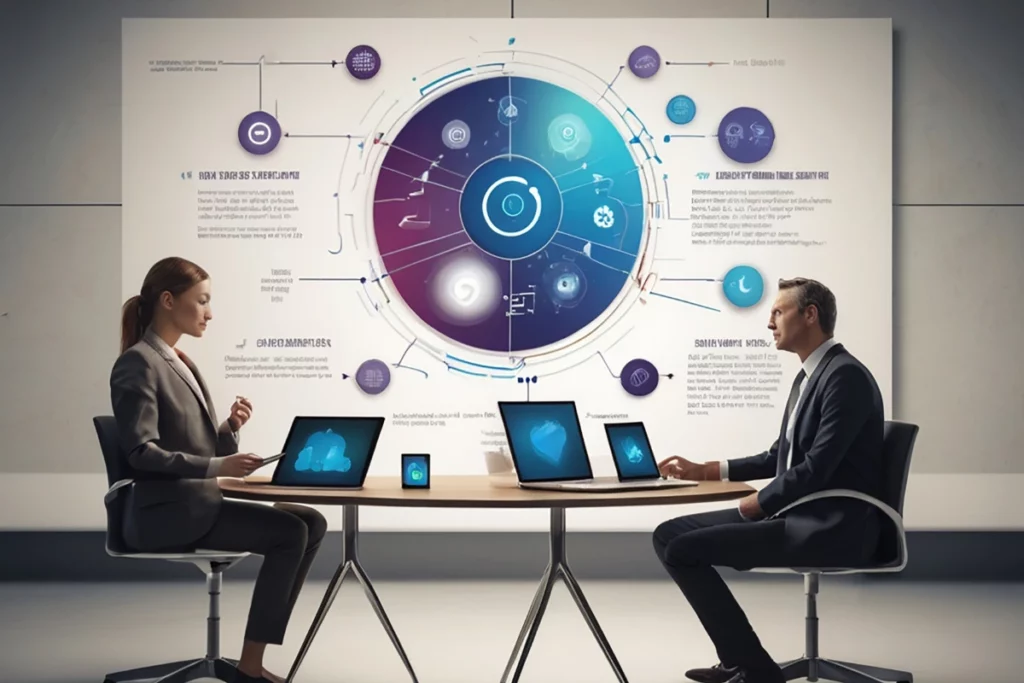Table of Contents
ToggleIn the rapidly evolving landscape of Indian Global Capability Centers (GCCs), the need for robust project management frameworks is more prominent than ever. Indian GCCs, hubs for delivering value-added services to Fortune 1000 companies, are increasingly adopting industry-standard methodologies such as ITIL (Information Technology Infrastructure Library) and PRINCE2 (Projects in Controlled Environments). These frameworks not only ensure streamlined service delivery and efficient project execution but also drive innovation and competitiveness.

The Importance of ITIL and PRINCE2 in Indian GCCs
Indian GCCs contribute significantly to global operations across industries, offering services from IT support and business process outsourcing to R&D and product development. To maintain operational excellence, GCCs must rely on proven frameworks for managing projects and delivering IT services. This is where ITIL and PRINCE2 come into play, providing structured approaches for service management and project execution.

ITIL focuses on aligning IT services with the needs of the business, ensuring continuous service improvement and value delivery. On the other hand, PRINCE2 offers a detailed, process-based method for managing projects, ensuring they stay on track in terms of time, cost, and quality. Together, these frameworks form a powerful combination, helping GCCs deliver consistent results across sectors.
Why ITIL and PRINCE2 Matter for Project Outcomes
For Indian GCCs, delivering successful projects is key to maintaining their strategic importance to global parent organizations. According to a recent survey by NASSCOM, over 75% of Indian GCCs identified project management and service delivery frameworks like ITIL and PRINCE2 as crucial for optimizing their operations and achieving project success.
Leading companies such as TCS and Infosys have highlighted the importance of these methodologies. In a statement, Infosys’ leadership emphasized: “Adopting ITIL and PRINCE2 has significantly improved our ability to deliver projects on time and within budget, increasing our overall service quality.”
The structured approach offered by ITIL helps GCCs manage IT service disruptions, ensuring minimal downtime. At the same time, PRINCE2 ensures that projects are meticulously planned, managed, and delivered. This results in reduced project risks, higher stakeholder satisfaction, and improved resource utilization.
Adoption Rates Across Industry Sectors
The adoption of ITIL and PRINCE2 in India has been growing steadily, particularly within sectors such as banking, financial services, insurance (BFSI), telecommunications, and healthcare. According to a 2023 industry report by Deloitte, adoption rates of ITIL and PRINCE2 in Indian GCCs are as follows:
| Industry | Adoption Rate of ITIL | Adoption Rate of PRINCE2 |
|---|---|---|
| BFSI | 68% | 58% |
| Telecommunications | 72% | 63% |
| Healthcare | 65% | 55% |
| IT and Services | 78% | 70% |
| Manufacturing | 60% | 52% |
These adoption rates reflect a growing recognition of the value these frameworks offer in managing complex, large-scale projects and IT services. Companies in the BFSI sector, for instance, rely heavily on ITIL for managing their IT services, while PRINCE2 is popular in sectors like IT and services for its project governance capabilities.
Popular ITIL and PRINCE2 Training Programs in India
As the demand for certified professionals in these methodologies increases, India has become a hub for training and certification in ITIL and PRINCE2. Leading training providers like Spoclearn, PeopleCert, and DevOps Institute offer a wide range of certification programs tailored to the needs of Indian professionals.
ITIL Training Programs:
- ITIL 4 Foundation Training: The entry-level course provides a comprehensive understanding of ITIL service management principles. Popular across all sectors, especially BFSI and IT services.
- ITIL 4 Managing Professional (MP): Designed for professionals involved in IT service delivery, focusing on technical and practical skills.
- ITIL 4 Strategic Leader (SL): Aimed at senior leaders, it addresses strategy, governance, and alignment of IT services with business objectives.

PRINCE2 Training Programs:
- PRINCE2 Foundation Training: Provides the fundamentals of PRINCE2 methodologies, making it ideal for beginners.
- PRINCE2 Practitioner: Builds on the Foundation course, preparing professionals to manage and lead projects using PRINCE2 methodologies.
Driving Competitive Advantage
Indian GCCs have positioned themselves as critical components in the global operations of Fortune 1000 companies. To stay competitive, GCCs must demonstrate their ability to deliver high-quality services and projects. ITIL and PRINCE2 certifications are now considered industry standards in job descriptions across many Indian GCCs, and certified professionals are in high demand.
Speaking on the value of certifications, a senior executive at TCS noted: “Having our teams certified in ITIL and PRINCE2 has given us a competitive edge. It ensures that we follow best practices in service management and project execution, ultimately leading to higher client satisfaction.”
Case Study: ITIL and PRINCE2 Implementation in a Leading Telecommunications GCC
Background
A leading telecommunications Global Capability Center (GCC) in India was facing several challenges in managing IT services and delivering projects on time. These challenges were impacting their overall service quality and customer satisfaction levels, which were critical for maintaining their strategic role within the parent company’s global operations.

Key Challenges
- Frequent IT service downtime.
- Poor coordination across multiple ongoing projects.
- Inconsistent project delivery timelines.
- Low customer satisfaction due to service disruptions.
Objectives
The GCC set the following objectives to overcome their challenges:
- Improve IT service management to minimize downtime.
- Standardize project management practices to ensure consistent delivery.
- Enhance customer satisfaction by ensuring higher service reliability.
- Align project outcomes with business goals and timelines.
Solution: Implementation of ITIL and PRINCE2
1. ITIL Implementation for Service Management
To address issues in IT service management, the GCC implemented the ITIL framework, focusing on key areas of service management such as:
- Incident Management: Aimed at quickly restoring services after disruptions.
- Change Management: Streamlined processes for implementing service changes without affecting operations.
- Problem Management: Identified root causes of recurring service issues to prevent future disruptions.
- Service Level Management (SLM): Defined clear SLAs (Service Level Agreements) with measurable targets to enhance service reliability.
2. PRINCE2 Implementation for Project Management
Simultaneously, the GCC adopted PRINCE2 to address challenges in project management. Key components of PRINCE2 implemented were:
- Project Initiation Documentation (PID): Clearly outlined objectives, deliverables, and timelines for each project.
- Stage-Gate Process: Projects were divided into stages, and each stage required formal approval before moving forward, ensuring better control over project scope and deliverables.
- Risk Management: Incorporated systematic risk assessment and mitigation strategies for each project.
Outcomes
The implementation of ITIL and PRINCE2 frameworks led to significant improvements in the GCC’s operations:
| Metric | Before Implementation | After Implementation |
|---|---|---|
| IT Service Downtime | 10 hours/month | 6.5 hours/month (35% reduction) |
| Customer Satisfaction (CSAT) | 70% | 85% |
| Project On-time Delivery | 60% | 80% (20% improvement) |
| Project Cost Overruns | 25% | 15% |
Key Benefits:
- 35% reduction in IT service downtime, resulting in smoother operations and reduced service disruptions.
- 20% improvement in on-time project delivery, ensuring that project deadlines were met, boosting overall efficiency.
- Enhanced customer satisfaction (CSAT) scores from 70% to 85% due to improved service reliability and timely project completion.
- Reduction in project cost overruns, with better control over budget allocations.
Lessons Learned
- Integrated Frameworks: The combination of ITIL and PRINCE2 created a holistic approach where service management and project delivery were aligned with business goals.
- Tailored Training: Providing targeted ITIL and PRINCE2 training to key teams ensured that employees could effectively implement these frameworks.
- Ongoing Monitoring: Regular audits and reviews of both ITIL processes and PRINCE2 projects helped identify areas for continuous improvement.
The Future of ITIL and PRINCE2 in Indian GCCs
With the growing complexity of projects and services delivered by Indian GCCs, the relevance of ITIL and PRINCE2 is set to increase. The rise of digital transformation initiatives, the shift to cloud-based services, and the need for enhanced cybersecurity are pushing GCCs to adopt robust frameworks for managing IT services and projects.
According to an industry report by KPMG, “By 2025, we expect the adoption of ITIL and PRINCE2 in Indian GCCs to grow by 30%, as organizations look to streamline their operations in an increasingly competitive global market.” This trend underscores the importance of investing in training and certification programs to keep pace with evolving industry demands.
Conclusion
Mastering ITIL and PRINCE2 is no longer an option but a necessity for Indian GCCs aiming to enhance project outcomes and service delivery. With adoption rates growing across various industry sectors, the combination of ITIL’s service management framework and PRINCE2’s project management methodology provides Indian GCCs with the tools to deliver consistent value to their global parent organizations.
As the demand for certified professionals rises, Indian GCCs should prioritize training their workforce in these methodologies to ensure they remain competitive in the global market. The future of Indian GCCs lies in their ability to harness these frameworks for enhanced operational excellence and project success.
